
Jack Leon Ruby was an American nightclub owner who murdered Lee Harvey Oswald on November 24, 1963, two days after Oswald was accused of the assassination of President John F. Kennedy. Ruby shot and mortally wounded Oswald on live television in the basement of Dallas Police Headquarters and was immediately arrested. In a trial, Ruby was found guilty and sentenced to death. Ruby's conviction and death sentence were overturned on appeal, and he was granted a new trial, but he became ill, was diagnosed with cancer, and died of a pulmonary embolism on January 3, 1967.

Lee Harvey Oswald was a U.S. Marine veteran who assassinated John F. Kennedy, the 35th president of the United States, on November 22, 1963.
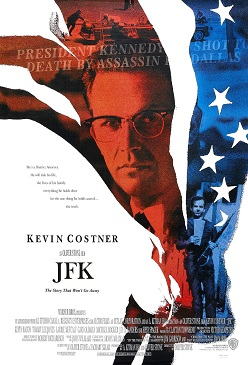
JFK is a 1991 American epic political thriller film written and directed by Oliver Stone. It examines the investigation into the assassination of John F. Kennedy by New Orleans district attorney Jim Garrison, who came to believe there was a conspiracy to assassinate Kennedy and that Lee Harvey Oswald was a scapegoat.
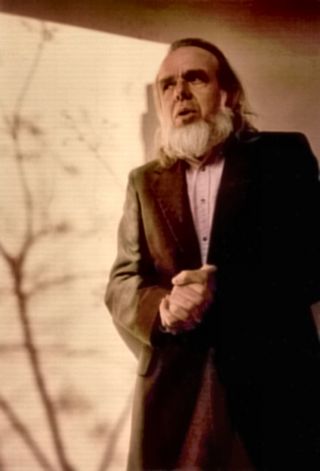
Kerry Wendell Thornley was an American author. He is known as the co-founder of Discordianism, in which context he is usually known as Omar Khayyam Ravenhurst or simply Lord Omar. He and Hill authored the religion's text Principia Discordia, Or, How I Found Goddess, and What I Did to Her When I Found Her. Thornley also was known for his 1962 manuscript The Idle Warriors, which was inspired by the activities of his acquaintance Lee Harvey Oswald before the 1963 assassination of John F. Kennedy.
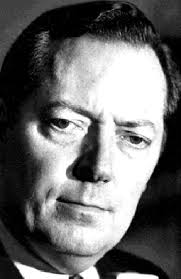
James Carothers Garrison was the District Attorney of Orleans Parish, Louisiana, from 1962 to 1973 and later a state appellate court judge. A member of the Democratic Party, he is best known for his investigations into the assassination of John F. Kennedy and the prosecution of New Orleans businessman Clay Shaw to that effect in 1969, which ended in Shaw's acquittal. He wrote three published books, one of which became a prime source for Oliver Stone's film JFK in 1991, in which Garrison was portrayed by Kevin Costner, while Garrison himself made a cameo appearance as Earl Warren.

On November 22, 1963, John F. Kennedy, the 35th president of the United States, was assassinated while riding in a presidential motorcade through Dealey Plaza in Dallas, Texas. Kennedy was in the vehicle with his wife, Jacqueline, Texas Governor John Connally, and Connally's wife, Nellie, when he was fatally shot from the nearby Texas School Book Depository by Lee Harvey Oswald, a former U.S. Marine. The motorcade rushed to Parkland Memorial Hospital, where Kennedy was pronounced dead about 30 minutes after the shooting; Connally was also wounded in the attack but recovered. Vice President Lyndon B. Johnson was hastily sworn in as president two hours and eight minutes later aboard Air Force One at Dallas Love Field.

Clay LaVergne Shaw was an American businessman, military officer, and part-time contact of the Domestic Contact Service (DCS) of the CIA. Shaw is best known for being the only person brought to trial for involvement in the assassination of John F. Kennedy. Shaw was acquitted in 1969 after less than one hour of jury deliberation, but some conspiracy theorists continue to speculate on his possible involvement.

Santo Trafficante Jr. was among the most powerful Mafia bosses in the United States. He headed the Trafficante crime family from 1954 to 1987 and controlled organized criminal operations in Florida and Cuba, which had previously been consolidated from several rival gangs by his father, Santo Trafficante Sr.

This article outlines the timeline of events before, during, and after the assassination of John F. Kennedy, the 35th president of the United States.
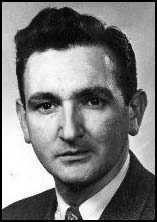
David William Ferrie was an American pilot who was alleged by New Orleans District Attorney Jim Garrison to have been involved in a conspiracy to assassinate President John F. Kennedy. Garrison also alleged that Ferrie knew Lee Harvey Oswald. Ferrie denied any involvement in a conspiracy and said he never knew Oswald. Decades later, photos emerged establishing that Ferrie had been in the same Civil Air Patrol unit as Oswald in the 1950s, but critics have argued this does not prove that either Ferrie or Oswald was involved in an assassination plot.
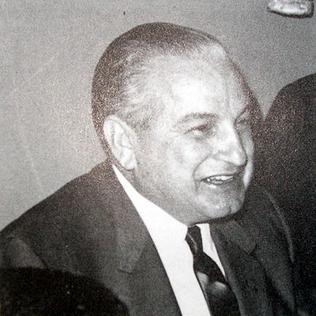
Carlos Joseph Marcello ;[Mor-sel-lo] born Calogero Minacore ; February 6, 1910 – March 3, 1993) was an Italian-American crime boss of the New Orleans crime family from 1947 to 1983.

William Guy Banister was an employee of the Federal Bureau of Investigation (FBI), an assistant superintendent of the New Orleans Police Department, and a private investigator. After his death, New Orleans district attorney Jim Garrison alleged that he had been involved in the assassination of John F. Kennedy. He was an avid anti-communist, alleged member of the Minutemen, the John Birch Society, Louisiana Committee on Un-American Activities, and alleged publisher of the Louisiana Intelligence Digest which maintained that the civil rights movement was part of an international communist conspiracy and was treasonous.

James William "Ike" Altgens was an American photojournalist, photo editor, and field reporter for the Associated Press (AP) based in Dallas, Texas, who became known for his photographic work during the assassination of United States President John F. Kennedy (JFK). Altgens was 19 when he began his AP career, which was interrupted by military service during World War II. When his service time ended, Altgens returned to Dallas and got married. He soon went back to work for the local AP bureau and eventually earned a position as a senior editor.

On March 1, 1967, New Orleans District attorney Jim Garrison arrested and charged New Orleans businessman Clay Shaw with conspiring to assassinate President Kennedy, with the help of Lee Harvey Oswald, David Ferrie, and others. On January 29, 1969, Shaw was brought to trial in Orleans Parish Criminal Court on these charges. On March 1, 1969, a jury took less than an hour to find Shaw not guilty. It remains the only trial to be brought for the assassination of President Kennedy.
Perry Raymond Russo was an American insurance salesman who became the key witness for the prosecution in the trial of Clay Shaw in New Orleans in 1969. Russo claimed that in September 1963, he witnessed businessman and civic leader Clay Shaw conspiring with Lee Harvey Oswald and David Ferrie to assassinate U.S. President John F. Kennedy.
The CIA Kennedy assassination is a prominent John F. Kennedy assassination conspiracy theory. According to ABC News, the Central Intelligence Agency (CIA) is represented in nearly every theory that involves American conspirators. The secretive nature of the CIA, and the conjecture surrounding the high-profile political assassinations in the United States during the 1960s, has made the CIA a plausible suspect for some who believe in a conspiracy. Conspiracy theorists have ascribed various motives for CIA involvement in the assassination of President Kennedy, including Kennedy's firing of CIA director Allen Dulles, Kennedy's refusal to provide air support to the Bay of Pigs invasion, Kennedy's plan to cut the agency's budget by 20 percent, and the belief that the president was weak on communism. In 1979, the House Select Committee on Assassinations (HSCA) concluded that the CIA was not involved in the assassination of Kennedy.

Dean Adams Andrews Jr. was an attorney in New Orleans, Louisiana. During the trial of Clay Shaw, he was questioned by New Orleans District Attorney Jim Garrison regarding his Warren Commission testimony in which he had mentioned a man named Clay Bertrand having called him shortly after the assassination of John F. Kennedy asking him to represent Lee Harvey Oswald in Dallas, Texas. In August, 1967 Andrews was convicted on three counts of perjury for lying to a grand jury in his previous testimony.

The assassination of John F. Kennedy on November 22, 1963, has spawned numerous conspiracy theories. These theories allege the involvement of the CIA, the Mafia, Vice President Lyndon B. Johnson, Cuban Prime Minister Fidel Castro, the KGB, or some combination of these individuals and entities. Some conspiracy theories have alleged a coverup by parts of the federal government, such as the original FBI investigators, the Warren Commission, or the CIA. Former Los Angeles District Attorney Vincent Bugliosi estimated that a total of 42 groups, 82 assassins, and 214 people had been accused at one time or another in various conspiracy scenarios.
Gordon Michael Duane Novel was a private investigator and electronics expert, who was known for several controversial investigations. He was most notable for his conflict with District Attorney Jim Garrison and his work as investigator for automobile industry executive John DeLorean and U.S. Attorney General Ramsey Clark.

Warren Easton Charter High School is a secondary school in New Orleans, Louisiana. The Warren Easton Charter Foundation governs the school, which is chartered by Orleans Parish School Board.